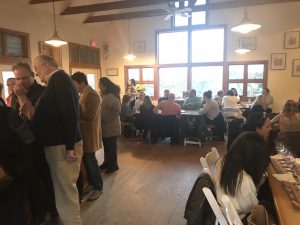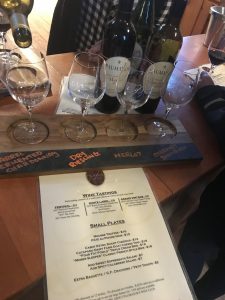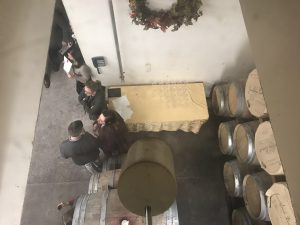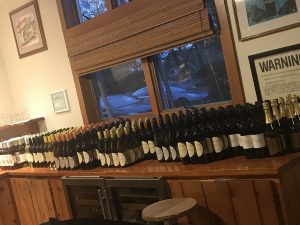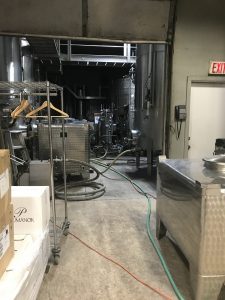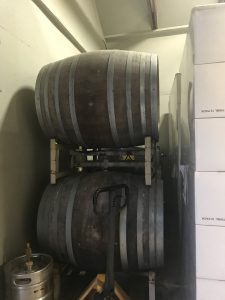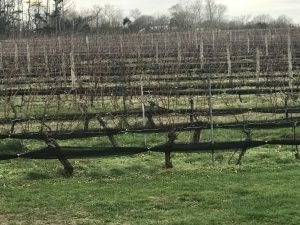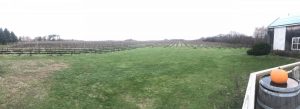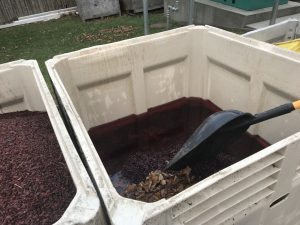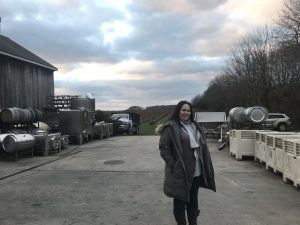Grand Wine & Liquor founded in 1933 is a family owned retail store; it is located at 30-05 31st St, Astoria, NY 11102 and is a large neighborhood store which offers a variety of wines as well as a full selection of spirits.
On arriving at this shop after getting a little lost I met the Store Manager Jamie Anulawicz who had given me an appointment on receiving my email. She was very informative and went the extra mile to make sure she answered all my questions. She has been in the wine business for 6 years and still enjoys every moment of it, she did a course called WSET course at the International Wine Center to advance her knowledge of Wines.
I asked her many questions like, what wine was most popular now? She mentioned that Mionetto Proseco was the most popular wine that was selling, on asking her the reason why it was so popular she mentioned that it was a big brand with national advertising. She also mentioned that Bordeaux’s were also in demand and a hot selling wine among most people and they were willing to spend anywhere from $20 to $50 on a bottle. Their top selling wine was Coppiere Pinot Grigio that cost $8.99 a bottle and was light –bodied and refreshing; it would pair well with delicate white fish.
She showed me around the store which was I think well organized with wines from various countries like Spain& Portugal, Germany & Austria, Italy, South Africa, Australia & New Zealand, France, Argentina, Chile and American regions like California, Washington, and Napa Valley. There are racks of sparkling, red and white wines on display. They have a great selection of wines which are presented with prices along with tasking notes and best food pairing. They store wines which are not on the main floor in the basement and attic which are temperature controlled to 55 degree F. Red & White wines are stored together since they sell quickly. There is a section for kosher wines Dry Red Wine, Dry White Wine, Dry Rosé wine bottled by Greek wine cellars D Kourtakis S.A. Near the entrance of the store they have a table displayed with Rosé from different regions and ranging from different prices which they call “Rosé Avenue Station”.
Since most of their customers are regulars they introduce new wines to them. They cater to their customer needs and also have wines from Greece, Croatia, Georgia, and Romania it’s like almost impossible to not find what you’re looking for. The store carries one 750ml bottle of their most expensive wine from France Leroy LesBoudoi Nuhs St Georges 2005 which cost only $1300. To end the evening I embraced my inner oenophile and purchased a bottle of Rose.
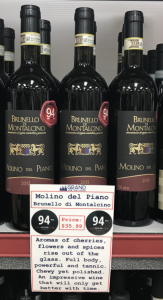
- Shelf Talker
Country: Italy
Region: Tuscany
Sub-Region: Brunello di Montalcino
Grape Varietal: Sangiovese
Type: Still wine
Classification: DOCG
Brunello di Montalcino is a wine made with 100% Sangiovese with Italy’s highest DOCG classification. This is the Sangiovese that most wine critics cite to be the best in all of Italy. – Wine Folly
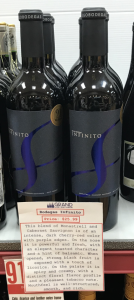
- Red Wine from Spain
Country: Spain
Region: Jumilla
Grape Varietal: Cabernet Sauvignon,Mourvedre
Type: Still wine
Tasting Notes
Intense and dark cherry red color with purple edges. High layer. Clean and bright. Dense tear that lightly dyes the glass. On the nose it is powerful, very intensefresh. Initially, the elegant notes of the Crianza appear, toasted and balsamic. When opened, exploits the black fruit touch of very ripe red fruit, almost jam, at some point liquorice with spicycreamy lactic. Fine floral tobacco touches. In the mouth it is powerful, well- structured, fresh and very sweet. Surrounding entry with a smooth and rich taste.
Wine Maker notes
Selected vintage from low production vines of more than 40 years old, located at 900m altitude. It is hardly harvested in 15 kg boxes at its optimum ripening point, going through the selection table before the vinification. We conduct separate vinification processes for each variety. The malolactic fermentation is done in French and American oak barrel. Once the process is completed, the wine settles for 18 months in those barrels.
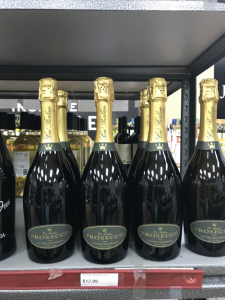
- Sparkling Wine from Spain.
Country: Italy
Region: Veneto
Sub-Region: Prosecco
Grape Varietal: Prosecco
Type: Sparkling
Tasting Notes:
Light-bodied, with crisp acidity and flavors of green pear, melon, fleur de sel and lemon zest. Clean and fresh, with a modest, lightly floral finish. – Wine Spectator
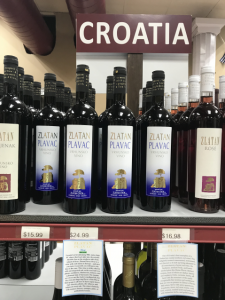
- Red Wine from Plenkovic Hvar Croatia
Country: Croatia
Region: The Coastal Region
Sub-Region: Dalmatian Background
Grape Varietal: Non-Varietal Red Blend
Type: Still wine
High-quality dry wine Plavac Mali from the localities of Sv.Nedjelja. This wine aged in large wooden barrels (volume 40, 96 and 130 hl) and stainless steel a year and after filling in the bottles another 4 months. Dark red in color and has a rich structure and a long persistence. The wine is dark ruby in color, with a rich and layered, pleasant, and deep aroma that has undertones of Dalmatian herbs, spices, minerality, saltiness and dark fruit. The wine is warm and comforting on the nose, which is typical of Zlatan’s wines and has given them a specific identity and cult-following in Croatia and Europe. It is immensely structured and balanced and possesses a refined, complex, and an exceptional presence on the palate that is followed by a long and persistent finish. It is said that Zlatan’s wines are traditional drink of fishermen, farmers and the inevitable detail of the best restaurant tables. – Wine & More

